11.1 Biodiversity
Types of Biodiversity
Biodiversity, short for biological diversity, refers to the variety of life on Earth, ranging from the smallest microorganisms to the largest plants and animals. Understanding biodiversity is required to appreciate the complexity and interconnectedness of life on Earth.
Biodiversity is often explored through three main levels:
Genetic Diversity
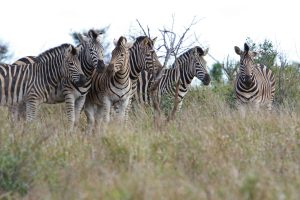
Genetic diversity is the variation in the genes of organisms within a population. Genes determine an organism’s traits, such as size, colour, or resistance to disease, so genetic diversity means that individuals in a population are not all the same. This variation is essential for the survival of species because it allows populations to adapt to changes in their environment.
For example, imagine a viral outbreak affecting a population of plants. If all the plants are genetically identical, the virus could wipe out the entire population. But in a genetically diverse population, some individuals might carry genes that make them naturally resistant to the virus. These resistant plants are more likely to survive and reproduce, passing on their beneficial traits to the next generation. Over time, this helps the population adapt and persist despite environmental challenges.
Species Diversity
Species diversity refers to the variety of different species in a particular region or ecosystem. It includes two key components:
- Species richness: The number of different species present.
- Species evenness: How evenly individuals are distributed among those species.
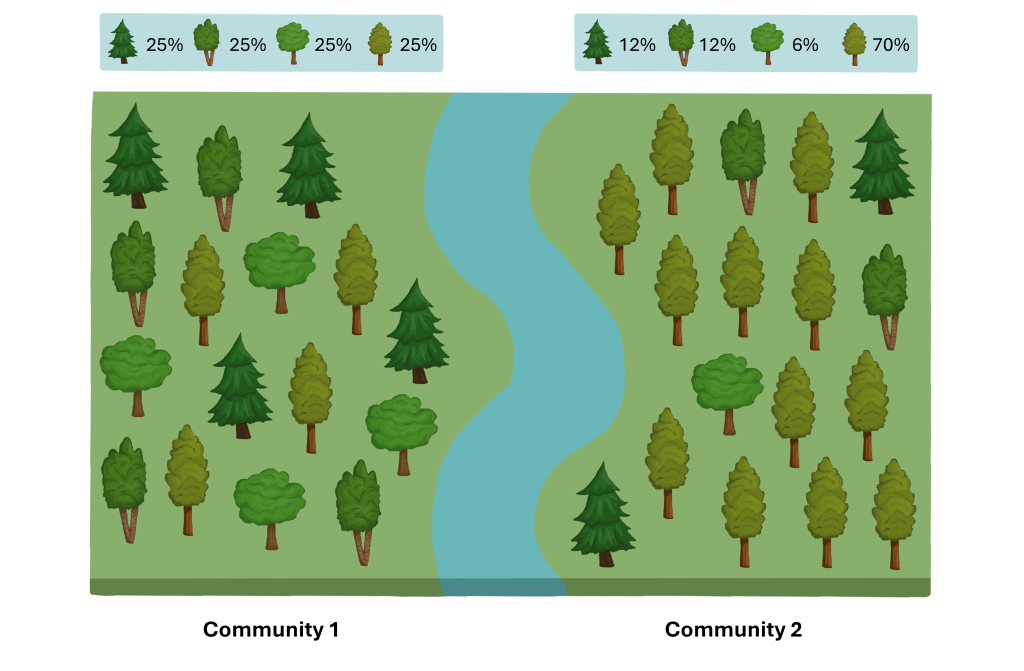
High species diversity is important because it contributes to the stability and resilience of ecosystems. A diverse ecosystem is better able to withstand disturbances, such as disease outbreaks or environmental changes.
Consider a forest facing an invasion by a pest that kills pine trees. If the forest is made up mostly of pine trees, the pest could destroy most of the forest, leaving little habitat for animals and causing many species to die or leave. However, in a more diverse forest with many types of trees, the loss of pine trees would be less devastating. Other tree species would remain to provide food and shelter, helping the ecosystem recover and continue to support wildlife.
Ecosystem Diversity
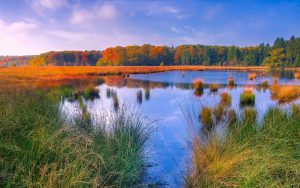
Ecosystem diversity refers to the variety of ecosystems in a given area. An ecosystem includes all the living organisms in a particular area, along with the abiotic (non-living) components like air, water, and soil. Forests, wetlands, grasslands, deserts, coral reefs, and tundra are all examples of different ecosystems. Each ecosystem supports unique communities of organisms and plays a role in global ecological processes like nutrient cycling and climate regulation.
Importance of Biodiversity
Biodiversity is essential for maintaining the health of the planet and the well-being of all living things. One of its most critical roles is supporting ecosystem services, the natural processes performed by ecosystems that directly or indirectly benefit people. These services include:
- Pollination of crops by insects like bees and butterflies.
- Purification of air and water by plants and wetlands.
- Decomposition of waste and recycling of nutrients by fungi and bacteria.
- Climate regulation through forests and oceans that absorb carbon dioxide.
Without biodiversity, these services would be less effective or could collapse entirely.
Biodiversity is also a vital source of food, lumber, and medicine. Many modern drugs are derived from compounds found in plants, fungi, and animals. Biodiversity holds cultural, spiritual, and recreational value. It is even important in mental health and well-being. Research shows that exposure to biodiverse natural environments (rich in plant, bird, and insect life) can reduce stress, lower the risk of depression and anxiety, and improve cognitive function.
Finally, diverse ecosystems are more resilient to disturbances such as disease outbreaks, extreme weather, or invasive species. This resilience is crucial in our rapidly changing world, helping ecosystems recover and continue to support life even under stress.
The Biodiversity Crisis
Earth is facing a biodiversity crisis. Across the globe, species are disappearing at an unprecedented rate, and ecosystems are being pushed beyond their limits. This crisis is not just about the loss of rare animals or plants, but it’s about the unravelling of the natural systems that support all life, including our own.
The Living Planet Index tracks the population trends of thousands of vertebrate species around the world. According to the 2024 Living Planet Report [PDF] (WWF, 2024, p. 24), monitored populations of mammals, birds, amphibians, reptiles, and fish have declined by an average of 73% since 1970. This means that over 50 years, the size of monitored wildlife populations has reduced, on average, by almost three-quarters.
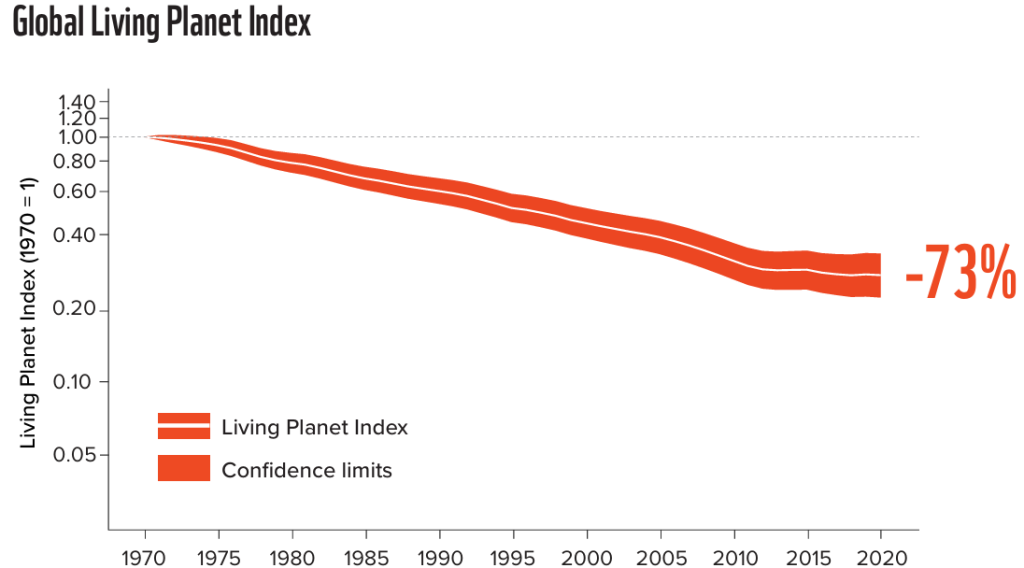

Figure 11.1.4 Image Description
A line graph titled Global Living Planet Index displays the change in the Living Planet Index from 1970 to 2020, with 1970 set as the baseline value of 1.0 on the vertical axis. The horizontal axis shows years in increments of five, from 1970 to 2020. The solid red line represents the Living Planet Index, showing a steady decline over time, while the shaded red band around it indicates confidence limits. The index drops by approximately 73% over the 50-year period, as highlighted by a large red “-73%” on the right side of the graph.
One way to understand the biodiversity crisis is through the Jenga analogy. Imagine an ecosystem as a tower built from Jenga blocks, where each block represents a species. As species are lost, blocks are removed from the tower. At first, the structure may remain standing, but as more blocks are taken away, the tower becomes unstable and eventually collapses. Similarly, ecosystems can tolerate some loss of biodiversity, but beyond a certain point, their ability to function breaks down. This analogy highlights how even the loss of seemingly minor or obscure species can have cascading effects, threatening the stability of entire ecosystems.
The biodiversity crisis is driven by a combination of human activities:
Habitat Destruction and Fragmentation
The leading cause of biodiversity loss is the destruction of natural habitats. Forests are cleared for agriculture, wetlands are drained for development, and grasslands are converted into urban areas. When habitats are broken into smaller, isolated patches, it becomes harder for species to find food, reproduce, and migrate. This fragmentation can lead to population declines and local extinctions.
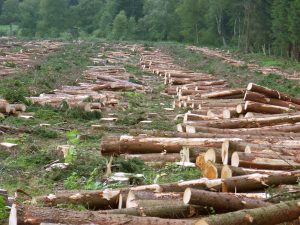
In Canada, the boreal forest, one of the largest intact forest ecosystems in the world, is being fragmented and destroyed by logging, mining, and oil extraction. This deforestation threatens species such as the woodland caribou, which depend on large areas of old-growth forest for their survival. Habitat fragmentation isolates caribou populations, making it difficult for them to find food and escape predators.
Ontario contains 25% of Canada’s remaining wetlands, which account for about 6% of the world’s total wetland area. Yet, these wetlands are being fragmented and drained for agricultural expansion and urban development. Southern Ontario has lost about 72% of its original wetlands, with some areas in southwestern Ontario losing over 85%. This loss threatens biodiversity but also reduces ecosystem services like flood control, water purification, and carbon storage.
Overexploitation
Overexploitation involves harvesting species from the wild at rates faster than their populations can recover. This includes overfishing, hunting and logging. Overfishing has depleted many fish stocks, driving some species to the brink of extinction. The illegal wildlife trade targets animals like elephants, rhinos, and tigers for their ivory, horns, and skins, drastically reducing their populations. Forests are heavily impacted by unsustainable logging, which threatens tree species but also destroys habitats for countless other organisms that depend on healthy forest ecosystems to survive.
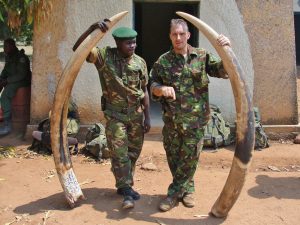
Overexploitation can also include using natural resources at rates that exceed ecological recovery. For example, freshwater is withdrawn from lakes, rivers, and aquifers for agriculture, industry, and urban use at unsustainable rates. This can lower water levels, degrade aquatic habitats, and concentrate pollutants.
In parts of the United States, such as California and Arizona, prolonged drought and overuse have led to severe water shortages. In Canada, parts of British Columbia and the Prairies are also experiencing increasing water stress due to drought and growing demand.
Pollution
Pollution from human activities harms species and ecosystems in many ways. Pesticides and fertilizers can poison soil and water, harming insects, amphibians, and aquatic life. Plastic waste can entangle or be ingested by marine animals. Air pollution can damage forests and acidify lakes. Light and noise pollution disrupt animal behaviour and migration.
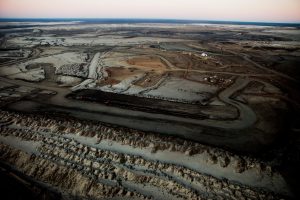
Mining generates more pollutants than any other industry in North America. The extraction of oil from the Alberta oil sands has significantly contributed to environmental pollution. Tailings ponds, which store the toxic by-products of this extraction process, have contaminated local water sources, harming aquatic life. Air pollution from oil sands operations releases substances that can lead to acid rain, adversely affecting both terrestrial and aquatic ecosystems.
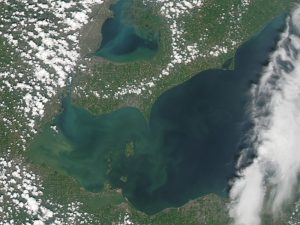
Having too many nutrients can also be harmful. When there is a large input of nitrogen and phosphorus (e.g., from sewage and runoff from fertilized lawns and farms), the growth of algae skyrockets, resulting in a large accumulation of algae called an algal bloom. Algal blooms (Figure 8.4.5) can become so extensive that they reduce light penetration in water. As a result, the lake or pond becomes aphotic and photosynthetic plants cannot survive. When the algae die and decompose, severe oxygen depletion occurs in the water. Fishes and other organisms that require oxygen are then more likely to die.
Some toxic chemicals don’t break down easily, so they persist in the environment and build up in organisms over time. Biomagnification is the process by which toxic chemicals become more concentrated in organisms at each successive trophic level. These substances are typically fat-soluble, meaning they accumulate in body fat rather than being excreted in water-based waste.
One of the most well-known examples of biomagnification involves the pesticide DDT, which was widely used in the mid-20th century. Although it was effective at controlling insects, DDT entered aquatic ecosystems and accumulated in fish. Birds that ate those fish, such as bald eagles, ended up with high concentrations of DDT in their bodies (as mentioned in 16.3). This caused their eggshells to become thin and fragile, leading to widespread reproductive failure. The issue was brought to public attention by Rachel Carson’s influential book Silent Spring, and DDT was eventually banned in many countries, including Canada.
Other substances known to biomagnify include PCBs (polychlorinated biphenyls), once used in industrial coolants, and heavy metals like mercury, lead, and cadmium. Biomagnification is a powerful reminder of how pollution can move through ecosystems and affect species far removed from the original source. It also highlights the importance of monitoring and regulating persistent pollutants to protect both wildlife and human health.
Climate Change
Climate change refers to long-term shifts in global temperatures and weather patterns, primarily caused by human activities. The main driver is the increased concentration of greenhouse gases in the atmosphere, such as carbon dioxide (CO₂) and methane (CH₄). These gases trap heat from the sun, creating a “greenhouse effect” that warms the planet. Most of these emissions come from burning fossil fuels and from deforestation. As the climate changes, it disrupts ecosystems by altering temperature and rainfall patterns, shifting growing seasons, melting ice, and increasing the frequency of extreme weather events. These changes pose serious challenges for many species, especially those with narrow habitat ranges or limited ability to adapt or migrate.
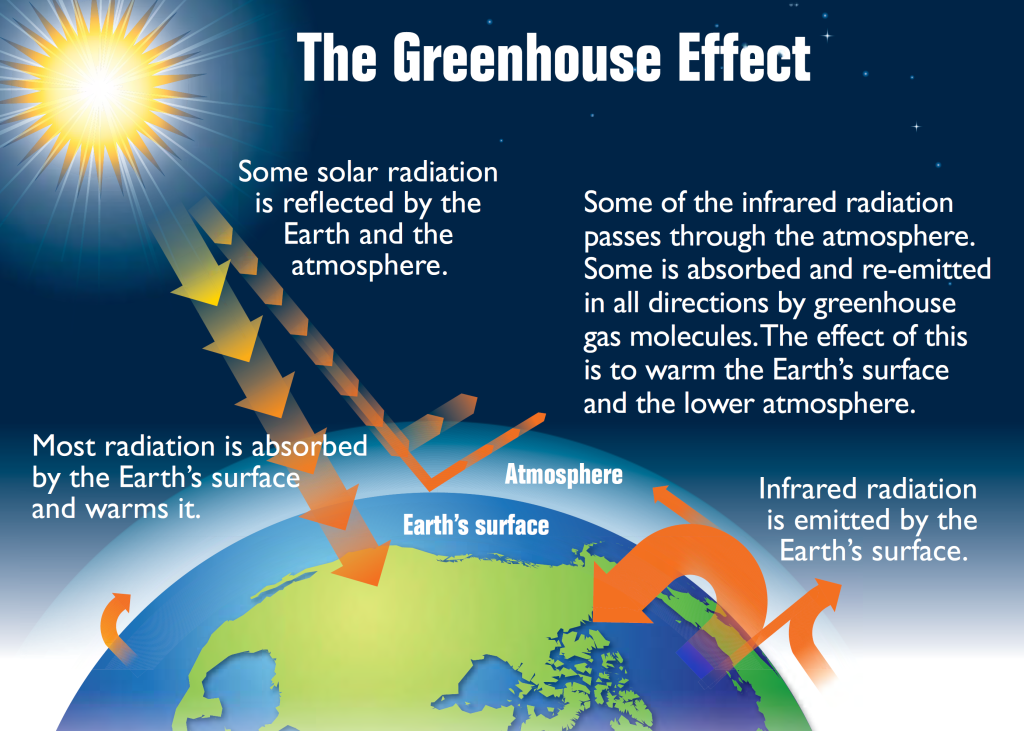
Figure 11.1.10 Image Description
An educational diagram titled The Greenhouse Effect illustrates how solar and infrared radiation interact with Earth’s surface and atmosphere. On the left, yellow arrows from the Sun show incoming solar radiation; some is reflected by Earth and the atmosphere, while most is absorbed by Earth’s surface, warming it. Orange arrows depict infrared radiation emitted by the Earth’s surface. Some infrared radiation passes through the atmosphere, while some is absorbed and re-emitted in all directions by greenhouse gas molecules, warming the surface and lower atmosphere. Labels identify “Atmosphere” and “Earth’s surface,” and explanatory text is placed near each set of arrows to describe the processes. The image uses a combination of bright colors against a dark blue background to distinguish radiation types and energy flows.
Wildfires are becoming more frequent and intense worldwide, driven by rising temperatures, prolonged droughts, and shifting weather patterns associated with climate change. These fires pose a significant threat to biodiversity by destroying habitats and displacing wildlife.
Coral reefs are highly sensitive to warming oceans and are experiencing widespread bleaching and die-offs.
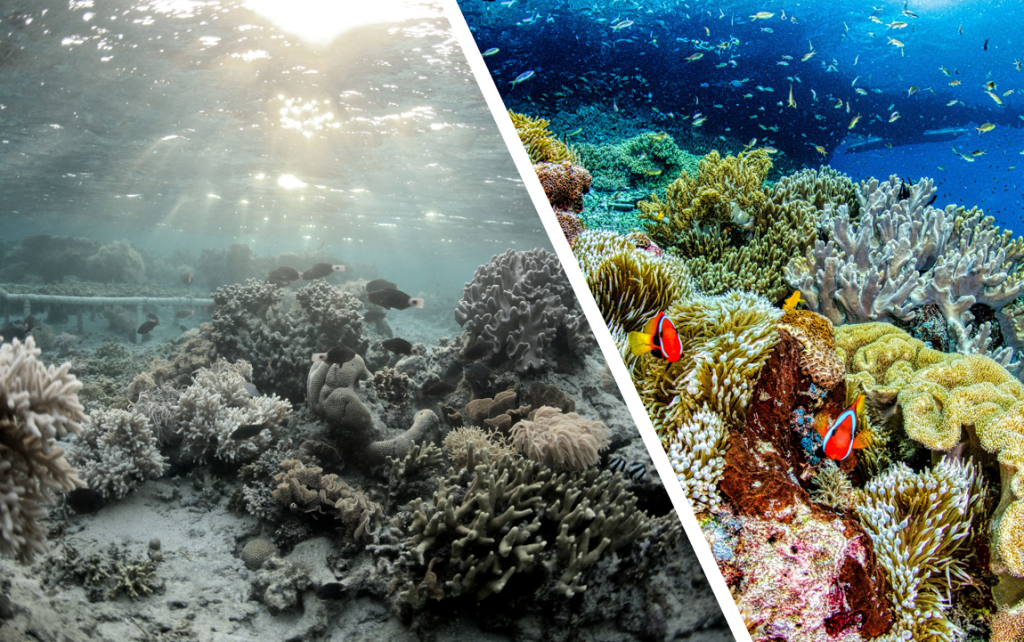
Invasive Species
As previously discussed, invasive species are plants, animals, or other organisms introduced to new environments that end up causing harm. Once established, they can spread quickly, outcompeting native species for resources, altering habitats, spreading disease, or preying on native wildlife. Because they often have no natural predators in their new environment, invasive species can grow unchecked and become a serious threat to biodiversity.
Invasive species can spread in many ways, but one of the most common (and preventable!) is through human activity. Global trade and travel move organisms around the world in shipping containers, on boats, or in soil stuck to tires and equipment. But invasives also spread in more everyday ways, including through our homes, gardens, and even our pets.
One major pathway is the release of pets into the wild. In Florida, Burmese pythons are now thriving in the Everglades after being released by pet owners who could no longer care for them. These massive snakes have no natural predators in the region and have caused dramatic declines in native mammal populations. Closer to home, in Ontario, goldfish released from aquariums have become a growing problem in ponds and lakes. In the wild, goldfish can grow much larger than in tanks, stir up sediment, uproot aquatic plants, and compete with native fish for food and space.
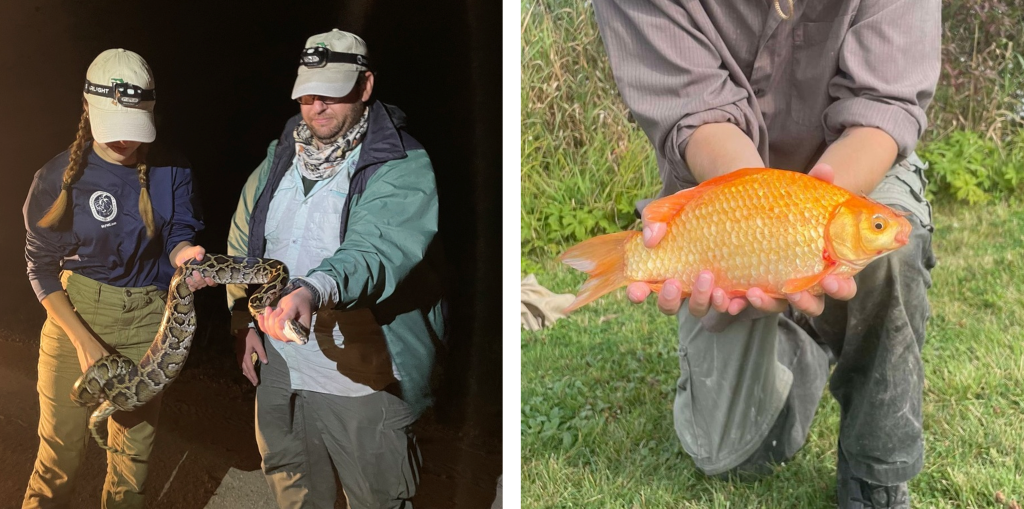
Gardens and landscaping can also be a source of invasive species. Many ornamental plants sold at garden centers are non-native, and some can escape cultivation and spread into nearby natural areas. Periwinkle, Japanese knotweed, and Norway maple are just a few examples of garden plants that have become invasive in parts of Canada.
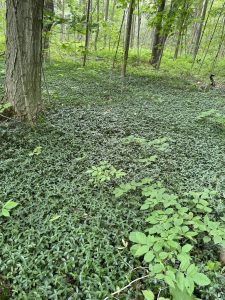
Knowledge Check
Text Description
- The even distribution of individuals among different species.
- The variety of ecosystems in a given region.
- The total number of species in a given ecosystem.
- The variation in the genes of organisms within a population.
- Have only one dominant species.
- Recover more effectively from disturbances such as pests or disease.
- Be completely destroyed if one tree species is lost.
- Lack the ability to provide ecosystem services.
- Pollination of crops by bees and butterflies
- Coral bleaching due to climate change.
- The illegal wildlife trade.
- The spread of invasive species.
- The competition between invasive and native species.
- How genetic variation increases within a population.
- How species loss can destabilize ecosystems over time.
- How climate change affects ocean currents.
- Natural selection.
- Pollution.
- Overexploitation.
- Habitat destruction and fragmentation.
Answers:
- d. The variation in the genes of organisms within a population.
- b. Recover more effectively from disturbances such as pests or disease.
- a. Pollination of crops by bees and butterflies
- c. How species loss can destabilize ecosystems over time.
- a. Natural selection.
OpenAI. (2025). ChatGPT. [Large language model]. https://chat.openai.com/chat
Prompt: Create 5 multiple-choice questions using the following content
“18.1 Importance of Biodiversity” from Biology and the Citizen by Colleen Jones is licensed under a Creative Commons Attribution 4.0 International License, except where otherwise noted.
“1.1 What is Biodiversity?” from Exploring Nature by Kari Moreland is licensed under a Creative Commons Attribution-NonCommercial-ShareAlike 4.0 International License, except where otherwise noted.

